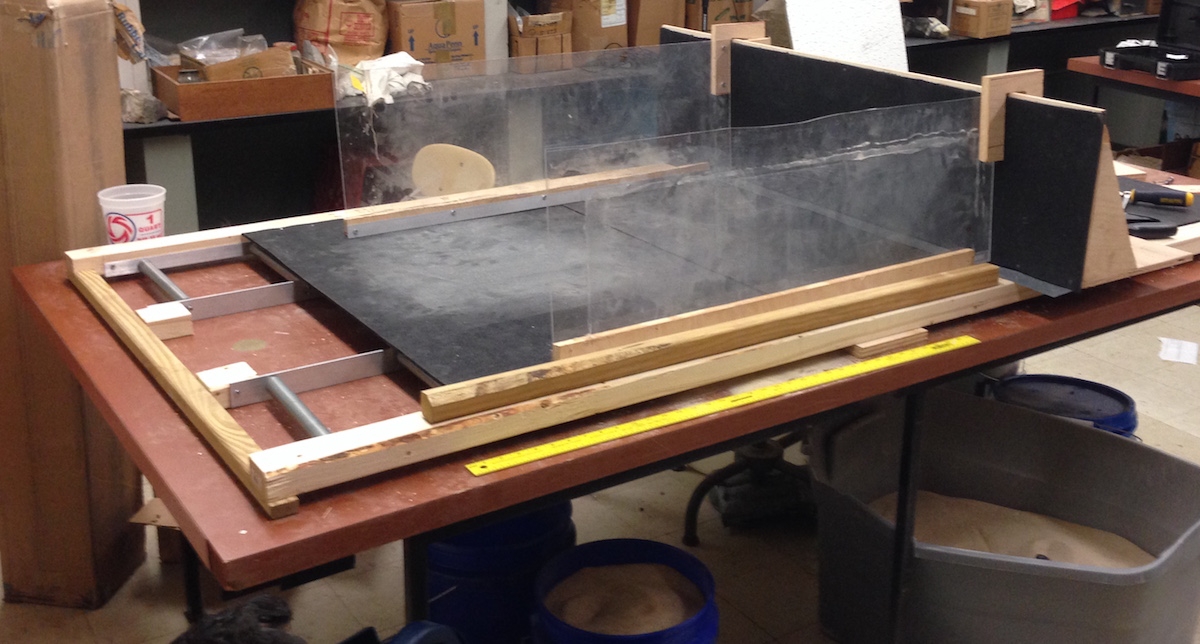Chris:. One of my projects this year has been building a sandbox deformation model that will allow me to study tectonic deformation in a lab setting. For those unfamiliar with these models, the basic idea is that when you scale entire thousand kilometre long deforming mountain belts and plate boundaries down to the scale of a table top, for the system to behave realistically you have to scale down the physical properties (such as strength and viscosity) of the material you’re deforming as well – and dry sand is a good match for rocks in the upper crust. This allows us to do the experiments that it is impossible to do with real mountain belts: observe how structures grow and develop over what would be millions of years in real time, and run multiple experiments to try and understand what controls how different systems behave.
I wanted a model that could potentially deal with a wide range of different tectonic conditions, so the design is a little experimental. Fairly typically, whilst I had a vision of what I wanted to build, actually building it and getting it to work has been a bit more tricky than I initially hoped. In other words, I’ve been making it up as I’ve been going along, and having great fun doing so!

